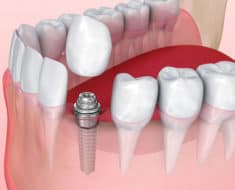
Scribendi
The education system is built the way that it requires students to express their viewpoints, doing research, examine a variety of topics, and so forth. Indubitably, it can be done by means of writing academic papers, where one is to put his/her thoughts on the paper. However, an individual may be confused about how to write a written discourse for the reason that there is a plethora of essay structures that depend on a subject, specific instructions, and style. As a consequence, some students might seek for custom college essay writing service in order to get their paper done. But for those who voraciously pursue completing tasks by themselves, the list of the most predominant points regarding paper structures has been designed, so read on to grasp such aspects.
The Introduction
The essence of the introduction is to present your position, opinion on the issue, providing readers with the points that you are going to develop in the following paragraphs. The most significant part of this essay is commonly known as the “thesis statement,” but impeccable introductory paragraphs are more than that. Before you reach the point of writing the thesis statement, the essay should begin with a “hook” that draws readers’ attention and makes them want to continue reading. There are lots of types of hooks, be it a u-turn, where you write someone’s opinion and then disagree with it, or a piece of background information that is crucial to the audience, all that given information has to prepare and stun the reader for your thesis statement. As to the thesis per se, it should be clear, concise, and straight to the point. Meaning it should be a one-sentence explanation of your perception of the topic that leaves no doubt which side you are on. Besides, you have to include short notes of your examples that you are going to develop in the next paragraphs because it will give a clear understanding of what the paper is about.
The Bodies
The body paragraphs are collectively agreed to spell out in detail the examples that support your thesis statement. Your middle part of the essay should comprise three body paragraphs, describing one specific argument in each of them. For the first body paragraph, you have to use your most robust argument or the one that comes the first in your thesis statement. This should be done in order not to confuse the reader and make him lost in your arguments. The first sentence of this paragraph must be the topic sentence that directly finds correlations with the examples listed in the introductory paragraph.
What is more, in your paragraph, you have to provide at least three examples of something or someone’s quote. For instance, if you tend to write about war poetry and Wilfred Owen, it is not enough to describe the harshness of war and its impact on the young generation only based on one poem. Give different quotes from at least three other poems. Once you have done this, you need to explain accurately why such examples prove your thesis sentence. Under no circumstances should you neglect this step because, by this, you will state and consolidate your arguments and examples and prove their comparability.

Sosyal Medya
Fancy and Useful Words
Not only will you show your proficiency and possession of an outstanding vocabulary, but also you will make your essay cohesive by means of transition words and phrases. As to the latter, transitional phrases are beneficial for depicting the reader where one section of the article ends, and another begins. It is also can be useful to spot them as the written alternative of spoken cues used in formal speeches that points the end of one block of ideas and the beginning of another.
The Conclusion
In the final analysis, you have to represent your issue, the question that you have broken, and arguments that led to its solution. However, you have to do that in a different way, yet you must still follow an adamant format, which means that you have to restate your thesis statement using different words in order not to repeat yourself, which might tire your audience. Roughly speaking, the conclusion can be considered as a second introduction for the reason that it comprises the bulk of the same aspects. However, it shouldn’t be too long; four full-fledged sentences should be enough to make a solid and informative conclusion. Compelling conclusions open with an appropriate transition (“in order to conclude,” “in the end,” “to sum up,” “to summarize,” “all in all,” or the way this paragraph started) and an allusion to the “hook” presented in the first paragraph. You then need instantly give a restatement of your thesis sentence. Indeed, you can use some of the words that you have previously written while making indirect references to your thesis. Such a technique is called an echoing effect, which hammers into readers’ minds. Having done all of that, you then should write the final sentence, which is generally agreed to be a “global statement” or CTA that stands for “call to action,” which, in turn, gives a sign that the aforementioned discussion has come to an end.
Tiny Hints
Suffice it to say, the style of the essay should be formal, which means that avoid writing “I,” as well as including anecdotes, jokes, and jargon in the paper. Moreover, if the written discourse you are required to write has to have works cited page, properly cite sources that you use because if you don’t – your paper is likely to get a lower mark, though it can have a marvelous writing style.
Final Words
In order to conclude, the majority of essays have almost the same structure that is to be rigidly followed. Whether it is a paper related to literature, history, or science, naturally, it needs to have five paragraphs, mainly the introductory paragraph, three body ones, and the conclusion. Each of them performs its role that is essential to the overall apprehension of the essay.









































